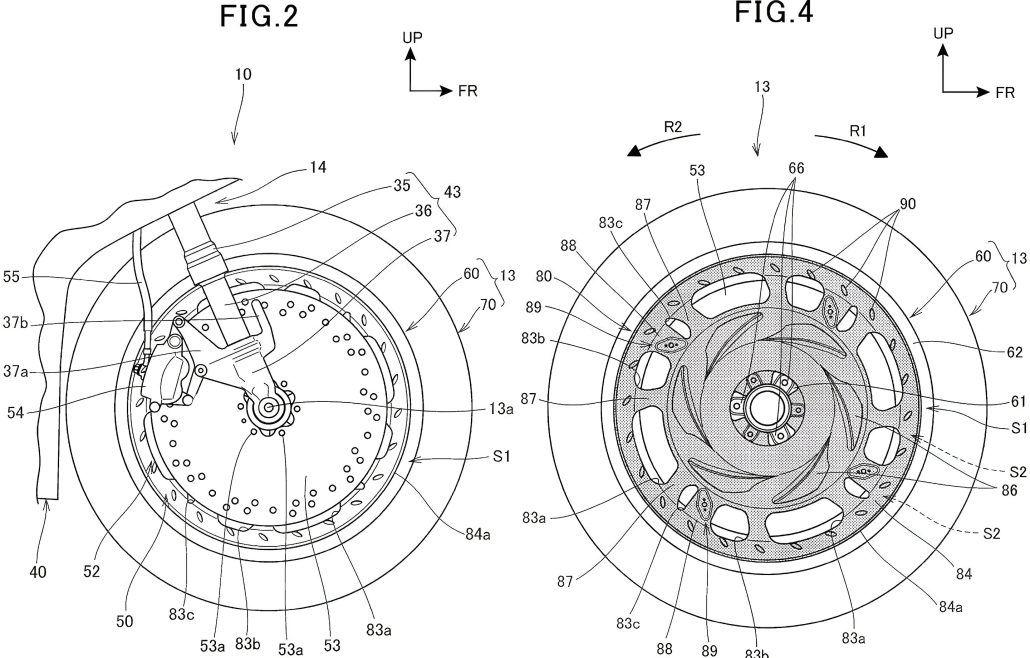The revolution in camera systems for motorcycles
In recent years, radar-based systems have been increasingly used in motorcycles. Now, cameras are on the rise as a forward-looking technology. BMW seems to be one step ahead in this regard, recently filing a patent application for a stereoscopic camera setup.
By placing two cameras in the motorcycle’s mirror housings – as described in the patent for the K1600B, for example – the system gains depth perception and can thus play an important role in the development of various technologies. Since the cameras are placed in the mirrors, this system could also be quickly applied to other models.
Matrix LED headlights for motorcycles
The primary goal of BMW’s design is to enable motorcycles to use matrix LED headlights. This technology is already common in many modern cars and allows the high beams to automatically dim when oncoming vehicles are detected. This year, Kawasaki added an auto-dimming headlight system to the H2 SX that uses a single camera behind the windshield to detect oncoming vehicles. Matrix LED systems, however, go far beyond this technology.
As the name implies, matrix LED headlights use an entire network of LEDs to produce the light beam, with each LED responsible for a limited portion of the light spectrum. In conjunction with cameras and related computer technology, individual LEDs can be selectively dimmed to track oncoming vehicles and reduce only the portion of the headlight beam that strikes them directly. The result is a system that does not dazzle other drivers but does not restrict the driver’s own view of the road, as the rest of the road remains fully illuminated.
Complexity and additional functions on motorcycles
Integrating this system into motorcycles adds an extra challenge, as the motorcycle leans into curves, adding another dimension to the dimming requirements. This is where two cameras come in handy, allowing the system to create a three-dimensional image of the surroundings to achieve its goal.
Although matrix LED headlights are the main focus of BMW’s new patent, the dual cameras also offer other possibilities. Some companies are already using cameras instead of radar for adaptive cruise control systems, using stereoscopic vision for depth perception to monitor the distance to vehicles ahead. The cameras also enable the implementation of technologies such as traffic light detection and traffic sign recognition. As a result, the motorcycle can detect both the current speed limit and the status of a traffic light (red or green), and even detect brake lights of vehicles ahead to provide early warning of a slowdown.
From cars to motorcycles: The future of safety technology
Since this technology is already being used successfully in automobiles, it’s likely that BMW’s patent accurately predicts the future of motorcycle technology. We can expect high-end motorcycles like the K1600 and possibly the next-generation R1250GS (likely an R1300GS), which is expected to debut later this year, to benefit from these innovations.
Summary: BMW develops stereo cameras for motorcycles: the future of safety on two wheels
BMW is pushing ahead with the development of stereo cameras for motorcycles, opening up numerous possibilities for the safety and comfort of two-wheeled riders. Matrix LED headlights, adaptive cruise control systems and traffic sign recognition are just some of the technologies that will find their way onto our motorcycles in the foreseeable future. It is already apparent that high-end models such as the K1600 and the next generation R1250GS will benefit from these advances.


- ABUS 79270ABUS Bremsscheibenschloss Detecto X-Plus 8008 2.0 Bremsscheibenschloss























